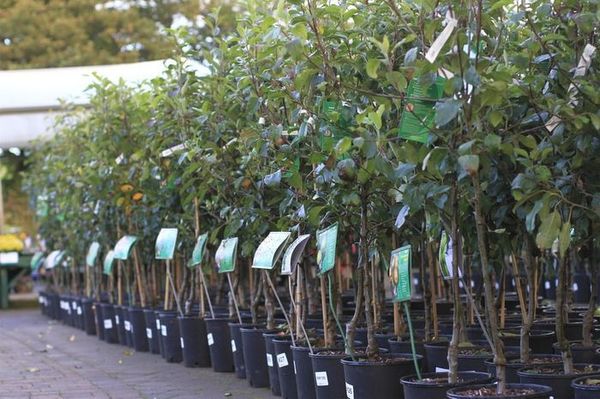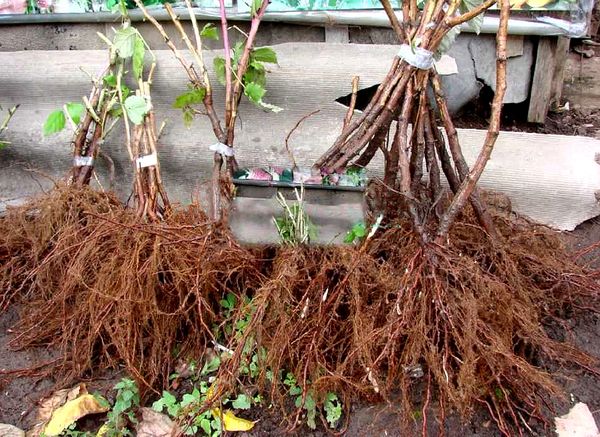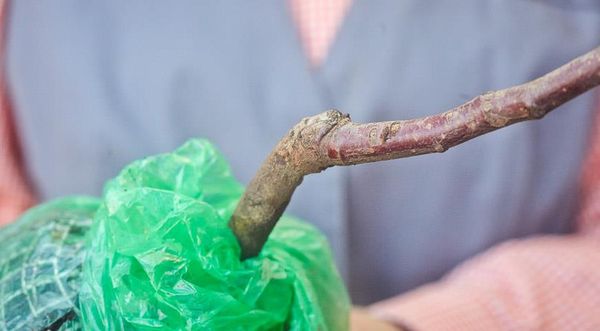Important nuances in choosing healthy seedlings
Content
Plant information on the tag
When buying a seedling, pay attention to the tag with the following information:
- indication of the species to which the fruit crop belongs (peach, cherry, etc.);
- variety name;
- indication of the region (zoning);
- what period of ripening does it belong to (early, middle, late);
- rootstock type.
Be sure to find out how old the seedling is (this information is also present on the tag).
Video "How to choose seedlings of fruit trees"
In this video, an expert will share tips for choosing healthy fruit tree seedlings.
Root system state
The root system should be examined most carefully. The roots of the seedling should look healthy and smooth without any build-up. If you make the wrong choice, then the danger lies not only in the fact that the plant can be infected with bacteria that cause root cancer and can die, the soil is also at risk of infection.
At the cut site, the root should be light and shiny. Outwardly, the root system resembles a beard with many thin processes. All of them must be firm and tight. Before planting, rotted areas are removed to fresh tissue. The roots must not be dry. Recently, seedlings have appeared on sale that have a closed root system (in containers or burlap). Here, of course, the choice becomes more problematic.
Another nuance: such plants are planted in a greenhouse; planted on the site in spring or autumn, if there is no frost. In any case, you should purchase certified goods in specialized stores that provide a guarantee.
General view of the plant
Fruit and berry seedlings should be taken only locally. The threat here is that the imported material may either not take root or infect the soil with infectious diseases.
Outwardly, the plant should look healthy: the bark is elastic, the buds are not shriveled, the branches on the trunk are not dry or broken. Examine the trunk carefully: if there are sores, holes, drops of resin, cracks, then do not purchase such a seedling. Wipe the trunk with a damp cloth - if the bark remains solid on it, then everything is in order with the seedling.
Examine the crown carefully: there should be no drying out and curved ends of the branches. If the root system is hidden, and the leaves have wilted, then it's okay, but if they darkened and twisted, then it's better not to buy such a copy.
Several recommendations for choosing seedlings of rose bushes.
If the buyer is inexperienced, then unscrupulous sellers can foist on rose bushes that were specially grown for forcing under the cut. In order not to be mistaken, pay attention to the fact that such bushes will be very massive. Also, you will find shoots that have been cut off many times and are now covered with bark, losing their green color.
Note also the correspondence between the number of branches and roots. Do not purchase a seedling if, despite good branching, it has a stunted root. For a bush with well-developed roots, it is enough to have 2-3 strong shoots.
Age appropriate
The best option for planting is one-year or two-year seedlings. Their main advantage is quick adaptation to a new place.For comparison: four- or five-year-old seedlings adapt to a new place for 3-4 years and very painfully endure moving to a new “place of residence”. In addition, they begin to bear fruit later.
The correct choice of seedlings can be made by evaluating its appearance. As for the annual, with a meter height and a diameter of up to 1.3 cm, the length of the roots should be up to 35 cm, the aerial part does not have lateral shoots. A 2-year-old seedling has a height of 1.5 m with a trunk diameter of 2 cm and roots from 30 cm, in the aerial part there may be a pair of branches.
After the purchase, it is important to bring the seedling in proper form. To do this, the root system should be immediately packed so that the roots do not dry out or the scion does not break off. It is good to have a damp cloth with you to gently wrap the roots and burlap, into which the root system of the seedling is placed. Only after that everything is wrapped in polyethylene. During transportation, the seedling will be protected from mechanical damage, and the roots will be saturated with moisture.
Vaccination site
Young grafted seedlings adapt best to new conditions. It is best if the vaccine was given a couple of years before planting. Carefully inspect the seedling: the root collar should be clearly visible, the cut from the cut rootstock will also be noticeable, but the place should already be protracted.
If you notice that the cut does not tighten well, then the tree may be infected with a tinder fungus. It is impossible to cure this disease.
Sometimes the grafting is accompanied by thorny outgrowths on the scion. This is especially noticeable in plums, peaches, pears and apricots. The presence of thorns indicates that the vaccination was made by the wild on the wild. An inexperienced buyer may not even notice at first glance.
Summarizing all of the above, we can say that young seedlings aged 1-2 years with a strong root system, purchased from reliable sellers, are good for planting. If you have already decided on the types and varieties of trees, then you can feel free to start laying out the garden.



